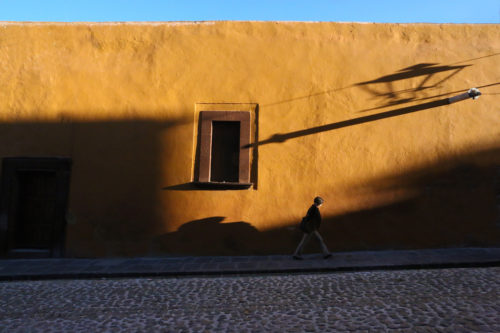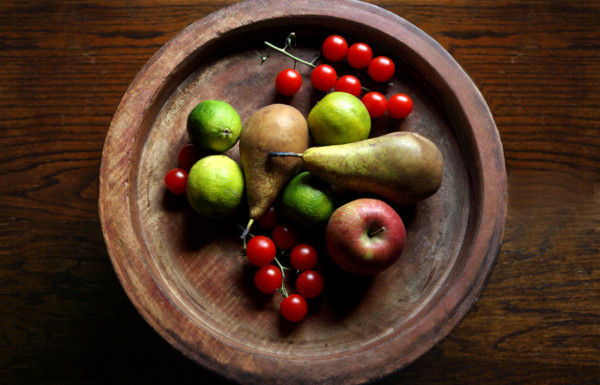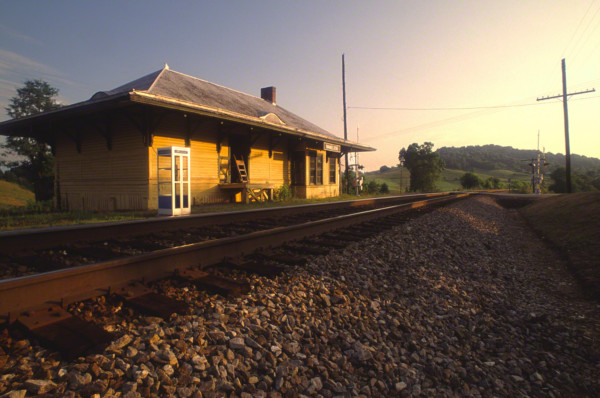One of the most important Pearls of Wisdom I share with my online class with the BPSOP, and with my “Stretching Your Frame Of Mind” workshops I conduct around the planet is, “I don’t photograph what I see, I photograph what I’d like to see”.
Don’t get me wrong, I do photograph what I see all the time. I’m perfectly happy to walk around using my Artist Palette which has all the basic elements of visual design on it. I’m able to use the right side of my brain (the creative side) to see what’s all around me.
However, I don’t know about you but for me, it’s not often that I can just come upon a location, situation, or subject where all I have to do is bring the camera up to my eye and click the shutter; and walk away with a great photo.
So not being a patient person, I’m just not going to wait for that to happen. I’m going to make it happen!!! I’m going to take the old proverbial bull by the horns.
I graduated college with a BA in Journalism and a minor in art, and starting back in middle school through high school and ending in my senior year I was very involved in painting and design. In virtually all those years the medium was painting, pencil drawing, watercolor, pastels, and printmaking; I even stretched my own canvas.
My tools were: brushes, colored pencils, pastel sticks, and an occasional printing press. I would start out with a blank piece of paper on a drawing table or a canvas on an easel. I added subject matter and a background of some sort until I thought I had a finished “work of art”.
Fifty-three years ago I switched the medium to a camera (it was instant gratification), and I still consider myself a painter/artist. Now, instead of a canvas on an easel, I have a camera on a tripod. I’m still painting, and that’s where the “photographing what I’d like to see” comes in.
Now, I know that there are photographers out there that would never alter anything in a scene/location they come upon because they call themselves purists; they always photograph what they see.
Well, that’s all well and good, but what happens if they never come across anything they like? Do they just settle for whatever is there? To me, reality is not like Willie Wonka’s Chocolate Factory where everything you see looks great and good enough to eat…not so far it isn’t.
Since I usually don’t see what I want, for me photography is about making pictures not taking them; if I were ever to have a creed/motto I would print on a t-shirt, that would be it.
I add, subtract, or just move things around within my frame for a variety of reasons, and whatever I do comes from using the elements of design that appear on my ‘Artist Palette’.
I’m also cognizant of the six principles of Gestalt and how to use them to create stronger more memorable photographs. I’ve written about them in an article for Adorama (Here’s the link: http://www.adorama.com/alc/0013706/article/6-Principles-of-Gestalt-Psychology-That-Can-Improve-Your-Photography ).
For example, I use negative space to define the positive space and I usually strive for a balance between them. Sometimes that means moving an object to the right or left. I’ll get up close and personal so I can anchor the subject in the foreground using Perspective to create layers of interest.
I’ll generate Visual Tension by placing or moving the subject close to the edge of the frame, or any of the other methods to create Tension that I teach. I’ll wet things down to create reflections. Line, Shape, Texture, Pattern, and Form are always at the back of my mind. I’m also a big believer in creating directional lines or Vanishing Points to lead the viewer through my frame.
Sometimes I travel with colorful props in the event I need something to communicate an idea or to provide more visual interest to my photo; or I’ll just move something colorful into my frame. Since I’m always saying that “Light is everything”, I’ll move things around alter the direction of the existing light to create a mood or add depth.
I know that a lot of photographers either don’t think about moving something (after asking permission, if need be), or they might be afraid to, or perhaps there’s a touch of the “lazy” in them.
These are just a few of the things I’m constantly thinking about when I start composing.
All I can say is to give it a try. Imagine your self a painter and you’re putting the finishing touches on your masterpiece. If it’s a matter of getting over the hump then just do it!!! You’ll be sooooo glad you did; I promise you won’t go to hell.
Here are a few more completely random examples of making pictures. In each case, I either saw it the way it was or the way I wanted it to be. You decide!!
Visit my website at www.joebaraban.com, and watch for my workshop schedule at the top of this blog. Come make some pictures with me sometime.
JoeB

































I’m glad the “white canvas” approach has worked for you.
Unfortunately there are situations in which the good old saying “Photography is all about subtracting from an already full canvas” is the only way to go with.
That’s become really true when what surrounds us is full of visual clutter. But I agree with anything else. We ought “make pictures”, instead of just “taking” them.
Where I live I’d never be able to find empty greenhouses, as in your example.
Thus I ought go with the old approach: subtract and organize, go trough visual clutter and find something interesting. And many times you won’t have permission to move things around at your needs, nor you can just apologize after having been a “brat”.
Different cultures, different approaches, same goal. Hardly same results.
You’re absolutely right Valeriano, the key is know when to do each one…and be able to think about doing each one!!!I’ve shot all over the world, and I’ve still been able to make up pictures in my mind. There’s always a way…at least that’s been my experience over the past forty-six years. If you want it bad enough, there’s always a way.
JoeB
Joe,
when you have a six figures budget (thanks to you I also know something new in English!), I think it’ll make things easier a lot in order to clean up the canvas and then put what you want to see in it.
Despite the fact that it is a huge responsibility, it is also an incredible resource and a luxury which only a few photographers have (you are one of those lucky guys).
Just let me give you an example about doing a wet-down: one time I almost got a ticket by doing that without a permission from a city council —which costs a lot of money—, and I wasn’t using a truck but a few buckets. Lesson learnt? Sometimes I can shot what I’d like to see only with the assistance of the weather, meaning I ought pass by many photos because there is a lack of the right circumstances; no matter if I get there at 5 in morning. In that case it means: waiting for the rain.
Thanks for the comment!!!
JoeB
There is no composition, only facts and what you want to do with those facts. Also there is no photographic style. A style is just a repeated mistake. This is what I have learned in my striving for excellence in photography. Let me illustrate my point. If I were to show you photographs you have never seen before, would you know that these photos were taken by Henri Cartier Bresson, or Robert Frank, or W. Eugene Smith?
Gary,
I’m not sure how your comment relates to this post, so please let me know your thinking?????
Let’s just talk about your comments. First of all there are indeed photographic styles, and they are hardly a mistake. It’s the way photographers think, the way they compose, expose, all the way to the cameras they use.
What do you mean by “There is no composition”? I’m not following.
As far as identifying photographs, that’s were your wrong. Do you study other photographers? Do you collect photo books? I do, and I can guarantee you that if you showed me work of the photographers you mentioned, I can tell you who shot them. Studying the masters is a good way to take your own work what I refer to as “up a notch”.
Btw, I happen to own one of W. Eugene Smiths prints…it’s called “Spanish Wake”. He’s one of my all time favorites!!!!!
As always, thanks for the comments Gary. It’s always nice to know people actually read my blog.
:-))))))
JoeB
Hey Joe nice to talk with you again! Please let me clarify my statements because maybe I was not completely clear. Again these are just my opinions as well 🙂 . I totally agree with the title of the post and agree with you Photograph what you want to see and not what you see.
What I have learned is that there is no composition only facts in front of you and what you want to include in your photographs. If the center of interest looks to far away, then move in closer to give the center of interest more strength. You must also include the essential details to support the center of interest. However, you may have to cut some of these details in half moving in closer. How large you want to make the center if interest and how much of the details you include is up to the photographer.
For example, I took a shot of an old woman sitting on a bench reading a bible and in the background was a graveyard with a casket wrapped in an American Flag. A dramatic image to be sure. On my first shot the Bible was not very visible to the viewer and I felt it was an essential detail I wanted to show. I had to get closer to the woman (without disturbing or harassing her) to make the Bible more visible. The compromise I had to make was to include only one casket wrapped in the American flag and not three.
My facts were the old woman on the bench, Bible, grave stones, and of course the casket. Now if I were all wrapped up in worrying about correct artistic composition ( there is no such thing ) interjecting my manufactured or copied photographic style I would have missed that shot! The woman could have gotten up and walked away at any moment.
I also say there is no photographic style because photographers obsess on this, just to try and let someone know it was their shot. Naturally photographers who want to do this usually copy some quote “famous style” or try and manufacture one. This just leads to missed shots and suppress anything wonderful that can come from them. A style, if there is such a thing, should come naturally. Lastly, yes it is extremely difficult to know which photographer took which pictures if you do not study their work. Maybe you can do that Joe. For me I have to look at a photo of a famous photographer for like 10 minutes to know what makes it great. Why it sells for 50,000 dollars. And yes I do collect photo books of the masters and study them. Gene Smith was a great photographer but man what an ego he had hunh!
Its just that when I read about going through an artistic palette before you trip the shutter, it makes me think that there all these rules I must follow. If I do not know these rules and how to mix them up creating different effects on photographs then I am dumb and will never truly understand photography.
The kind of photography I truly enjoy is photojournalism which moves at the speed of life. I do not have a lot of time to get shots. Also I do not believe in posing these type of shots either. It would just not be authentic and Bresson said to stay away from the artificially contrived.
Joe I think you are a wonderful photographer and have a lifetime of experience over me, which is why I read your blog! But when you say things like light is everything, I do not believe that. Human emotion to me is everything and humans are most active in harsh contrasty midday light. I do shoot in black and white to help the aesthetics of shooting in such light. Anyways these are my thoughts Joe and its good to talk with you!
Gary,
I’d like to see the photo you’re talking about with the woman and the bible.
Ok, the fact that you like ” Human emotion to me is everything and humans are most active in harsh contrasty midday light.” to me that’s your style….your approach to photography!!!
Shooting in harsh midday light is your approach, and it works in B/W, but not in color (that is for me). Btw, I spent the beginning years of my career shooting for UPI, then AP. I was also a Black Star photographer so I know all about Photo-Journalism. I lived and loved it it for years, shooting mostly B/W. I have B/W photos in the permanent photography collection at the Museum of Fine Art in Houston. When you’re being chased down the street during the race riots, while you’re re-loading your Nikon F motor drive, it’s hard to pose your shots!!!
And at that point I absolutely agree, light is not everything!!!
🙂
Now that I teach in color, light is everything.
JoeB
Did I mention that I own “Spanish Wake” by W. Eugene Smith? Have you read his book on Minimata? Would you eat the poisoned fish like he did? Btw, he died broke, and had to borrow money from fellow photographers to live on. That doesn’t sound like a man with toooooo much of an ego?????
Every weekend i used to visit this site, for the reason that i wish for
enjoyment, since this this web site conations truly fastidious funny stuff too.